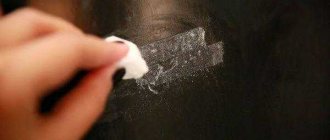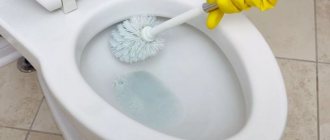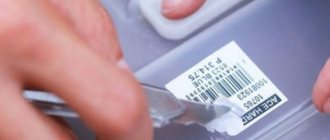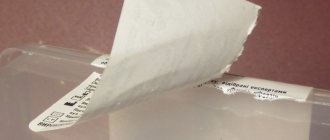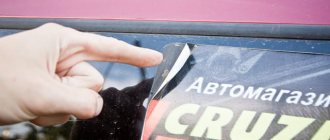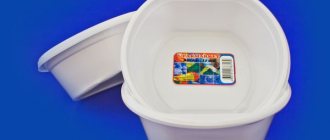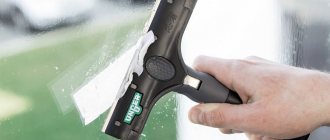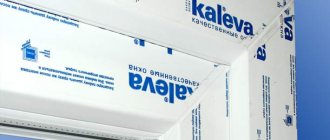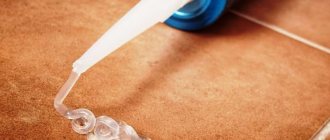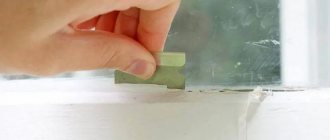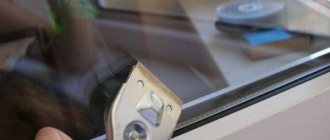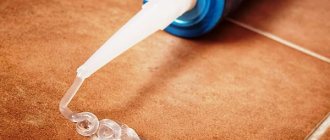Updated: 06/01/2021 10:40:02
Expert: Panteleeva Irina Vladimirovna
What is it for? - you ask. There are different reasons. Some people want to make an unusual lamp, others plan to cut a bottle in half and make stylish glasses, while others simply pour oil or vinegar into beautiful bottles.
In order not to waste your time looking for the best option, we have tested the research of home craftsmen in practice and bring them to your attention.
Removing Labels from a Glass Bottle
Glass is inert to chemical solvents and resistant to mechanical damage.
It's hard to tell what kind of glue was used on the bottle. Therefore, first of all, we remove the decorative base. There will be no problems with paper pictures on water-soluble glue. They need to be placed in water and they will fall off on their own.
To erase the surface paper coating from acrylic glue, we use 2 options.
Dry label removal
Many adhesives soften when exposed to heat. We will use hot water or a hairdryer. When using boiling water, do this:
- Place the bottle in a container or sink. This is necessary in case the bottle bursts due to temperature changes.
- Boil water and pour small portions into a bottle.
- When the surface of the glass warms up, you can pick up the edge of the label and pull. Sometimes the glue is so fusible that the tag literally slides off.
- Remove as much of the paper layer as possible.
We work differently with a hairdryer:
- Wrap the neck or bottom of the bottle with a towel. It depends on how you feel comfortable holding it and which part the sticker is removed from. This is also necessary for safety reasons, to protect your hand from cuts or burns.
- Let's start heating the sticker area with a hairdryer. You can use a construction or household appliance. Do not set the temperature above 100 degrees to prevent the glass from cracking.
- Start pulling the label by the edge. If it comes off in pieces, you can heat and remove the paper gradually.
Removing paper with water
Whatever the glue, the first thing you need to do is remove the paper. This will make it easier to dissolve and remove the adhesive layer.
The procedure is simple:
- Place the bottle in the water so that the label is under the water. If you don't have a large container, place the bottle horizontally in a shallow dish with the label facing down.
- Leave the glass container in the water for at least 1 hour. During this time, the paper will become wet, even if it has a protective coating.
- Remove the label by pulling the edge. If you see that the paper is still dry in the center, place the bottle in the water again.
- If a wet sticker is difficult to remove, you can use a sponge with abrasive fiber or the dull side of a knife blade.
Removing a sticker from a PET bottle
Here you can use a hairdryer on low heat or soak it (if the label is made of paper). Boiling water cannot be used, since hot water causes the plastic to deform. Soaking for a plastic sticker is simply not effective. But it can be easily removed without preparation, simply by peeling it off the bottle, after which one or several strips of glue remain.
General recommendations
The adhesive used to attach labels to bottles is based on various components. Therefore, it is often necessary to use several methods to remove sticker residues. In this regard, regardless of the chosen method, when cleaning the adhesive from the label, you must follow the following recommendations:
- if after treatment with a solvent the glue begins to roll off, then the procedure must be repeated;
- to speed up the process, you need to fill the bottle with warm water (the recommendation is relevant for a glass bottle);
- after removing the label, you must immediately wash off the glue, otherwise in the future it will be more difficult to deal with the remnants of the composition;
- do not remove the adhesive composition using fire;
- Do not clean plastic and glass bottles with abrasive substances or hard brushes.
If, after cleaning, the container is used for storing food or drinking water, the container must be washed both outside and inside.
Otherwise, residual cleaning agents may enter the body. In addition, before removing the label and glue from the bottle, the container must be soaked in water.
Removing labels from ceramic bottles
This is a sensitive issue. Especially if the surface is not covered with paint or varnish. The clay surface is porous. The glue and scratches are very visible on it. Therefore, you need to use the most gentle methods.
Removing a sticker by heating
You need to warm the surface with a hairdryer and gently pull the edge of the label. If you're lucky, you can remove both the sticker and all the glue at once.
Removal with water and soda
This method works like this:
- Make a solution. For 1 glass of hot water, take 1 tablespoon of baking soda.
- Soak the bottle, label side down, for 15 minutes or more.
- Pull the corner of the pasted label. It should come off easily along with the glue.
This method can be useful for those who collect wine labels and for whom it is important to remove the entire sticker.
White Spirit
The peculiarity of this solvent is that it evaporates without leaving any traces.
The label should not be rubbed. You need to do this:
- Apply a piece of cloth soaked in solvent to the label.
- Leave for 15 minutes.
- Remove the label by prying its edge with a knife.
- Allow the surface to dry.
No. 2. Alcohol
To remove the label, you can use any alcohol-containing liquid. For this purpose, you can use vodka, cologne or glass cleaner. The problem area of the glass container is processed as follows:
- Moisten a cloth well with alcohol-containing liquid.
- Wipe the bottle in places where there are traces of glue.
- Leave the cloth on the glass for 30 minutes.
- Remove any remaining glue.
- Rinse glass containers with clean water.
Strong moonshine can also be used to successfully remove traces of glue on glass.
Methods for removing glue residues
Half the job is done - the paper is removed. All that's left is to get rid of the glue. We will also divide our actions into 3 types: in relation to glass, plastic and ceramics.
Removing the adhesive layer from a glass container
The surest and most effective method is a steel wool. It easily removes glue from glass without causing any harm to it. Even better, apply dishwashing detergent to the washcloth.
That, it would seem, is all, we can finish the article. But perhaps you don’t have this sponge, or you are afraid for the surface of a valuable wine specimen. In this case, we recommend using the following methods.
Nail polish remover
A good working method with a product that is sold in any supermarket. To remove traces of glue, you must:
- Apply the liquid to a cloth or cotton pad.
- If the glue stain has dried, you can press a napkin onto it for 20 seconds.
- Then begin to scrub off the dirt using progressive or circular movements.
- If necessary, you need to moisten the disc with the solution again and rub the adhesive mark.
Sunflower oil
One of the most effective ways. The sequence of actions when removing a label with oil does not differ from the usual method of rubbing:
- Wet a cotton pad with oil.
- Lubricate the adhesive trace with an oil swab.
- We begin to remove the dirt.
When exposed to oil, the adhesive rolls well. If you don't like scrubbing the stain with a cotton pad, you can take a plastic card and use it to wipe off the stain.
White spirit and kerosene
These are chemical solvents that have a similar effect. With their help you can remove glue along with stickers. To do this you need:
- Cut out shreds from a napkin, equal in size to the labels on the bottle.
- Moisten the pieces with solvent and apply them as a compress to the sticker.
- After 10-15 minutes, pry up the edge of the label and remove it from the surface of the bottle.
- If there are traces of glue left, you can wipe them off with the same napkin.
WD-40
A universal, water-repellent lubricant that fights rust and works great on adhesive labels on glass. Do you know why? Because it contains oils and white spirit - those substances that wash off the glue in a matter of minutes. The method of use is simple: apply the product to the stain and rub with a cloth soaked in WD-40. The sticky layer will disappear before your eyes.
Mechanical removal of glue
The following tools work effectively:
- Abrasive and melamine sponges.
It is good to wipe off glue residues from a heated surface. When paired with detergent, a regular sponge works 2 times better.
- Steel wool
. This paper removal method works perfectly on all bottles. The main thing is to soak the sticker well. This is a sponge made from soft metal shavings. With normal friction, it will not scratch the glass. You will be surprised how easily all the paper and glue will come off.
- Heating with a hairdryer, in the oven, with hot water
. Glue that has softened due to temperature can be wiped off with a rag. Repeating the procedure two or three times will completely remove any remaining adhesive.
- Cooling (freezing)
. You can put the bottle in the freezer for a few minutes. Often, the frozen adhesive layer comes off along with the label.
Removing glue from a plastic bottle
Due to the high “vulnerability” of plastic, we chose the most harmless and working methods:
- The best way is to wipe off sticky stains with sunflower or any other vegetable oil. You can also use essential oil. To wash the bottle, just apply oil to the surface and after a few seconds begin to roll off the glue using a gauze napkin.
- The mechanical method, in the form of gentle heating with a hairdryer or cooling in the freezer, also does a good job of removing labels from plastic.
- Washing off the stickiness with a sponge and soap in warm water also gives good results.
What not to do when cleaning a plastic bottle:
- Use boiling water. At temperatures above 60 degrees, the PET bottle begins to deform.
- Rubbing the surface with abrasives and metal objects is strictly contraindicated if it is important for you to preserve the appearance of the plastic.
- Many solvents make the surface of the plastic cloudy. Therefore, you need to use them with caution.
Removing glue from a ceramic (clay) surface
To avoid leaving stains and scratches on the clay surface, you can use the following methods:
- Wrap a piece of tape around your fingers, sticky side out. Then, using repeated movements, apply the tape to the contaminated area and tear it off sharply. These movements should be repeated until all the glue from the bottle has transferred to the tape. Sometimes the process works better if the adhesive surface is moistened or heated.
- Apply white spirit. You need to wash off the dirt carefully, without effort.
- Wash the stain with a sponge and detergent under running warm water. If you do not make rough rubbing movements, then with care you can use hard fiber, which is glued to a dish sponge.
The methods we provide for cleaning bottles from labels, price tags and labels are simple and accessible. There is no need to buy expensive special equipment when you always have vegetable oil, hot water and soap at hand.
What not to use when cleaning glass from labels
Before removing the label from a glass container, you should know a few rules:
- Do not use a hard brush or other objects that can scratch the glass in the area to be cleaned.
- Non-aggressive cleaning agents should be used.
- It is not recommended to heat the surface before removing glue from it. This could cause the glass to break.
Hairdryer vs stickers on plates
Why is this method your favorite? It's simple. The stickers fly off the dishes themselves in a matter of seconds. There is no need to rub, pry, or scratch anything. No stink from fusion fluids. Which, by the way, harm the skin of your hands and can “eat” the colorful design on the dishes. And another five minutes is enough to clean a large set of dishes.
To remove the sticker I do the following:
- I turn on the regular hair dryer I use to dry my hair at maximum temperature and speed.
- I bring it almost close to the sticker.
- I blow it for 15-20 seconds.
Usually this time is enough for the label to fly off. Be prepared to catch her. Otherwise, it will be blown away by a stream of air from a hairdryer, and you will have to look under the tables. In my opinion, this method would be ideal. If it were not for one “but” - if the dishes are of high quality and expensive, then the labels will stick very tightly. Apparently they use some kind of super glue. Then you have to resort to other tricks.
Helpful information
Removing sticky residue from glass containers is not an easy task. However, by following the wisdom below on how to remove glue residue, you can make this process easier and faster.
- Heat softens the glue from the inside. The hotter the water, the easier it will be for the glue to come off. If you fill the bottle with hot water, the process will go faster.
- After the sticker is removed, you need to immediately begin removing the glue until everything is soaked and easily removed. If you don’t do this right away, you’ll have to soak everything again later.
- A sufficient amount of time is required for soaking, otherwise the glue will simply roll off.
- If the container being cleaned will subsequently be used for food, then after cleaning it from build-up, it would be advisable to wash it not only from the outside, but also from the inside.
Cold storage method
This method includes storing onion sets in the following places:
- Cellar;
- On the bottom shelf of the refrigerator;
- Basement.
In this case, the storage temperature must be maintained in the range from 0 ° C to -3 ° C. With this environmental characteristic, the bulbs will remain until spring planting. It is not worth storing bulbs on a loggia - the temperature there is constantly changing, and the required humidity cannot be provided. Before placing the seeds in a cool room for the winter, they need to be dried very well for 14 days. At the same time, the temperature is maintained around 35 °C.
Important. A very important condition is low humidity.
During the long winter period, after a large amount of snow has fallen, you can plant onions in the ground. This way it will be stored in natural conditions. If there is no suitable place for the cold storage method, you can bury a bucket of seed in the ground for the winter.
The storage technology in a bucket is as follows:
- sawdust is poured down;
- seed material is laid;
- a layer of sawdust is poured;
- the bucket closes;
- the bucket is buried in such a way that there is at least 15-20 cm from the top to the surface;
- The burial site is selected so that it is dry, without a large amount of groundwater.
In this method, the harvest is preserved at home. In this case, it is necessary to maintain the temperature in the apartment in the range from 17 to 25 °C. In addition, it is necessary to maintain a constant flow of fresh air and low environmental humidity.
Storage at home
Note. If there is a higher temperature in the room, the seedlings will dry out, and there will be no opportunity to plant them in the spring.
If conditions are more favorable, onions can germinate much earlier than planned. In an apartment, various cardboard boxes or plastic bags are usually used for storage.
We suggest you familiarize yourself with a sign of a moth appearing in an apartment
Advanced Tips
- Strive for Efficiency
Check the type of labels that are on your bottles before attempting to remove them. This will save you a lot of trial and error because you will know whether to use a mild or stronger solution.
Keep in mind that European beer bottle labels tend to be less stubborn than American ones.
- Try the dishwasher
Consider running bottles through a soap-free cycle in your dishwasher. Hand rinsing is usually sufficient, but for super clean and sparkling bottles, we recommend running them in the dishwasher.
Procedure
Removing unnecessary information from a glass vessel occurs according to a certain algorithm. Initially, you need to heat the container so that the glue becomes more pliable. The heat sources in this case are: lighter, candle, burner, hair dryer. The next step is soaking, during which the paper layer comes off and the glue dissolves. Next - summing up: removing residual glue and labels, washing the glass surface.
Label removal process.
